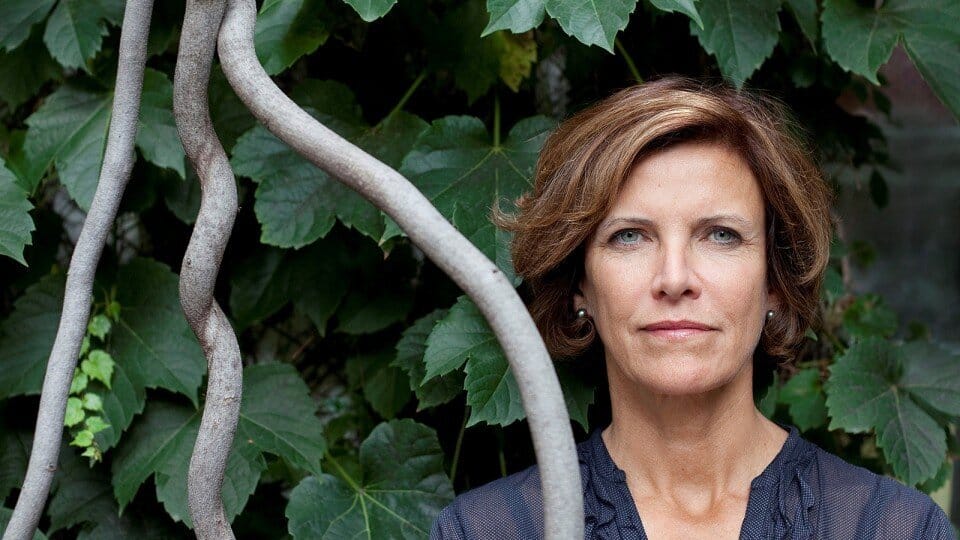
10 questions for Jeanne Gang
The Aqua Tower downtown, the Nature Boardwalk at Lincoln Park Zoo, WMS Boathouse at Clark Park and the Northerly Island Framework Plan are just a few of the Studio Gang Architects projects that grace the city of Chicago.
The Aqua Tower downtown, the Nature Boardwalk at Lincoln Park Zoo, WMS Boathouse at Clark Park and the Northerly Island Framework Plan are just a few of the Studio Gang Architects projects that grace the city of Chicago.
Jeanne Gang is a true artist whose work has been admired in the Museum of Modern Art and the Art Institute of Chicago, and she is one of only a handful of architects ever to receive a MacArthur Fellowship.
In the future, we can look forward to seeing more of Studio Gang’s work, including an expansion of the American Museum of Natural History in New York, a strategic plan for the National Aquarium in Baltimore and designs for high-rise towers in San Francisco, Miami, New York and Chicago. We are honored to have such a visionary firm as Studio Gang Architects here in Chicago, and to have Jeanne Gang as our featured architect for this month’s “Questions for an Architect.”
1. What project have you enjoyed working on the most during your career?
A design proposal of ours called “The Garden in the Machine,” which was shown in MoMA’s exhibition Foreclosed: Rehousing the American Dream, connected the dots between a number of issues that we are still engaging with today. The project poses solutions to difficult problems such as affordability and renewal of post-industrial sites and tapped into alternative ownership models, technology and cottage industry to reveal a new live-work model. I collaborated with some amazing people, including my colleagues at Studio Gang, Roberta Feldman, Theaster Gates, Kate Orff, Greg Lindsay and Rafi Segal.
2. Name your favorite Chicago building.
The Monadnock Building by Burnham & Root is a favorite because it so clearly reveals a tipping point and the design struggles of its time. Its unadorned, machine-like lines had to be achieved through extraordinary hand-craftsmanship. The architects had to contend with the combination of steel frame and exterior bearing wall, but they made it look effortless. Hybridity is this building’s forte.
3. What five things can you not live without?
If this is a travel question, I’ll tell you the contents of my Freitag bag: Three apples (as in, a piece of fruit and two devices), a thermos of coffee, and a sketch book with pencils. If it’s a philosophical question, I’ll need more space.
4. If you could collaborate with any historic Chicago architect, who would it be and why?
With his focus on building, materials and technology, and editing to the essential, Mies van der Rohe is someone I greatly admire. But I’d want to know more about his collaboration skills first.
5. Why is it important for you to be engaged with CAC?
Chicagoans have the highest architecture IQ in the country, and I would bet this is directly attributable to CAC. I engage with CAC because I think that the communication of ideas between architects and those who simply enjoy and want to understand architecture is important.
6. If you were not an architect, what would you be?
If I had grown up near an ocean, I might have become a marine biologist. I’m fascinated by the complexity of the ocean’s inhabitants.
7. What is the one project type you have not worked on yet but would like to design?
I spend a lot of time thinking about museums and libraries as important educational and cultural components of urban life. We’ve actually just begun a project for the American Museum of Natural History, but I’d like to continue to pursue these building types and help museums and libraries achieve their maximum impact through design.
8. What is Chicago’s biggest built environment challenge?
How to rebuild communities devastated by the foreclosure crisis and other ongoing inequities; how to renew and regenerate the city’s polluted post-industrial sites such as the Chicago River; and how to create technically and environmentally advanced infrastructure, such as green infrastructure, to support a robust global-city economy.
9. How does CAC inspire people to discover why design matters?
CAC’s exhibitions, programming, and tours perform an important educational function. Awareness and knowledge of Chicago’s architectural history help connect us to the past and encourage us to keep improving our built environment as a reflection of who we are now.
10. Mies van der Rohe or Frank Lloyd Wright?
Mies for my head, Wright for my heart.
Published: September 25, 2015
